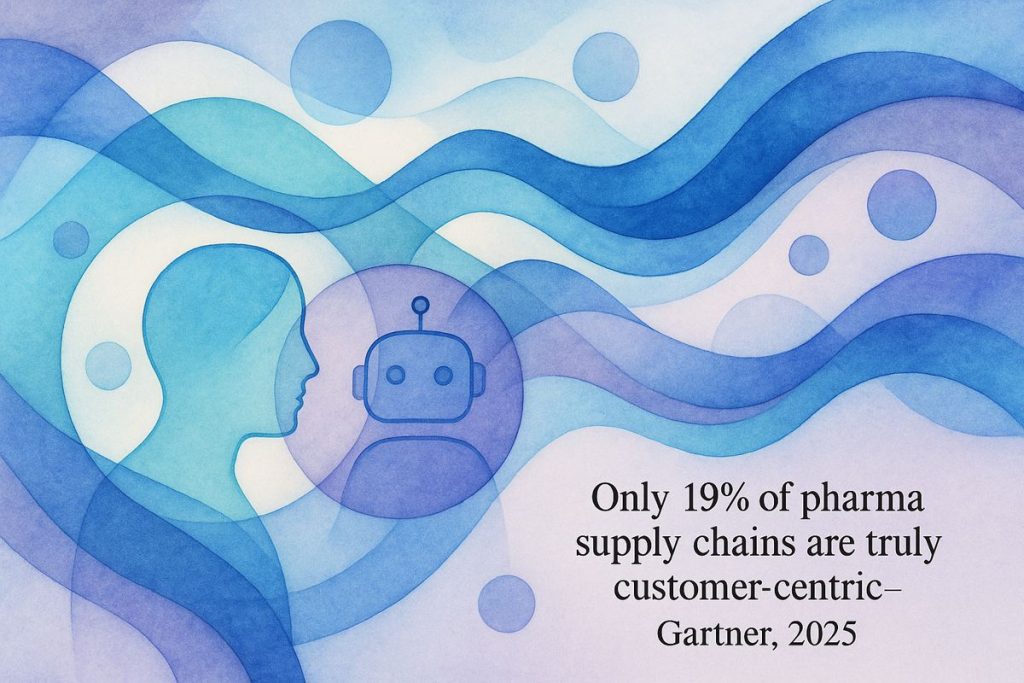In 2025, the best strategy for pharma and life sciences is true omnichannel communication—blending phone, chat, SMS, and portals so customers get smooth, instant help wherever they reach out. The old ways don’t work anymore; customer needs change fast, and most now expect quick, personal responses across any channel they choose. Big platforms like Salesforce and Twilio tie everything together, helping teams see each customer’s story and quirks. Using up-to-the-minute data guides better choices, but real-world trial and customer focus matter most. Getting this right isn’t just about saving money—it can make a real difference in patient care.
What is the best channel strategy for pharma and life sciences in 2025?
The best channel strategy for pharma and life sciences in 2025 is a true omnichannel approach. This means delivering seamless, real-time, and context-aware customer experiences across all touchpoints—phone, chat, SMS, and portals—integrated by advanced platforms like Salesforce, Genesys, and Twilio, guided by up-to-date customer data.
The Old Maps No Longer Work
Let’s get something straight: if you’re leading service strategy in pharma or life sciences and still clinging to last year’s channel playbook, you’re already behind. The landscape is mutating at the pace of a CRISPR experiment—think gene editing, but for customer preferences. Gartner, that perennial oracle of tech and business, has been waving red flags the size of Sputnik: what worked even a few months ago simply won’t cut it in the hyperspectral glare of 2025.
I remember, not so long ago, getting a frantic email from a colleague at Roche. She was convinced we should double down on call centers because “doctors prefer phones.” We ran the numbers. Turns out, fewer than 23% of their queries came by phone last quarter; the rest came through a patchwork of portals, chatbots, and even WhatsApp. Talk about a palimpsest of communication. I felt a mix of embarrassment (for both of us) and a twinge of relief—maybe it’s not just me who can’t keep up. (source)
Let’s pause a moment. Can you smell that burnt-coffee aroma? That’s the scent of old beliefs being roasted by new data.
Omnichannel: A Symphony, Not a Jukebox
If you’re still calling your approach “multichannel,” you might as well be dusting off your fax machine. The real high-wire act now is omnichannel —the seamless, memory-rich glide from one touchpoint to another, like a ballet dancer who never misses a beat. Gartner puts it bluntly: only 29% of senior marketers feel their omnichannel efforts are actually working. The rest? Lost in the maze.
Here’s where concrete specifics matter: 71% of pharma and life sciences customers expect real-time, context-aware support. Not “We’ll get back to you in 2–4 business days” but “We see you just called—would you like to continue this on chat?” That’s the bar, and it’s set by big-league platforms like Salesforce and Twilio, whose integrations are now the stuff of legend. Twilio, for instance, explains how you can connect Genesys Cloud directly to SMS, so you don’t fumble the handoff when a patient or provider flips channels midstream. (source)
There’s something almost synesthetic about it—like hearing the click-clack of keyboards merge seamlessly with the gentle ping of a chat notification. When was the last time your tech stack made you feel that everything just… flowed?
Data Is Your North Star—But Don’t Blindly Follow It
We’ve all heard “data-driven” so many times it’s lost its flavor, but in pharma, it’s a matter of regulatory survival, not just efficiency. Gartner’s 2025 technology trends hammer home the imperative: measure who’s contacting you, how, and why—and then act. When I first started tracking channel usage, my dashboard was a Jackson Pollock painting of dots and spikes. It was messy. I was tempted to ignore the outliers. But those oddball cases? They turned out to be compliance-critical—think an oncologist in Vladivostok using Telegram because email is blocked at her hospital.
So, I had to stop and ask myself: am I designing for the clean, theoretical journey—or the riotous reality of actual users? My first answer wasn’t pretty; we missed some urgent cold-chain alerts because we’d over-indexed on email. Ugh. Lesson learned—today, every new channel gets trialed with real customer scenarios, not just the happy path.
Here’s the kicker: only 19% of pharma supply chains are designed with the customer’s goals in mind (Gartner’s supply chain report). That’s a chasm of opportunity.
Big Platforms, Small Details: The Glue That Holds It Together
Let’s talk tools. The days when you could kludge together a CRM and call it a day are over. Giants like Genesys and Salesforce now offer unified, AI-infused platforms that act as your omnichannel air traffic control. With Twilio’s latest integrations, even asynchronous SMS and mobile app notifications become part of the same tapestry. What does this mean for the frontline? Agents see not just a name—but a context, a history, and even the little quirks (like “prefers chat after 5pm”).
When I first plugged in Salesforce’s AI-driven call routing, I half expected an avalanche of mistakes. Instead, customer satisfaction nudged up 11% in the first quarter. Bam! Now, we’re using Genesys Cloud to triage routine queries instantly, escalating only the regulatory oddities or “this-needs-a-human” moments.
But, as every technologist knows, no platform is infallible, and the best ones still need an occasional human nudge (and maybe a smack on the side, like an old TV set). That’s the price of progress.
The Stakes: Costs, Compliance, and Continuity
Let’s get down to brass tacks. In healthcare supply chains, including pharma, the “cost to serve” is a beast—over 37% of the total cost of patient care, according to Gartner. (source) Every inefficiency in your channel mix bleeds money and, more importantly, jeopardizes patient outcomes. I once saw a single missed notification
